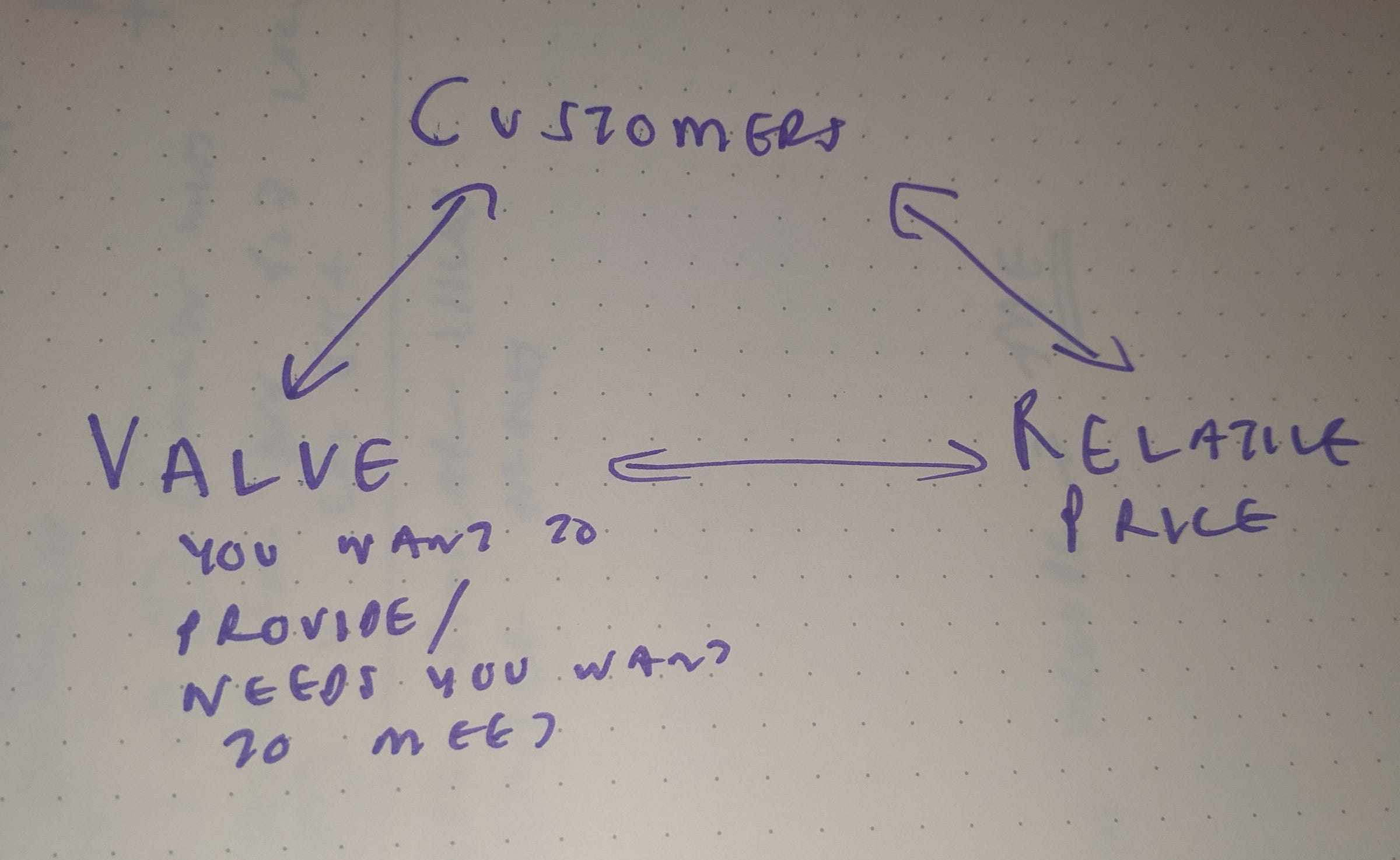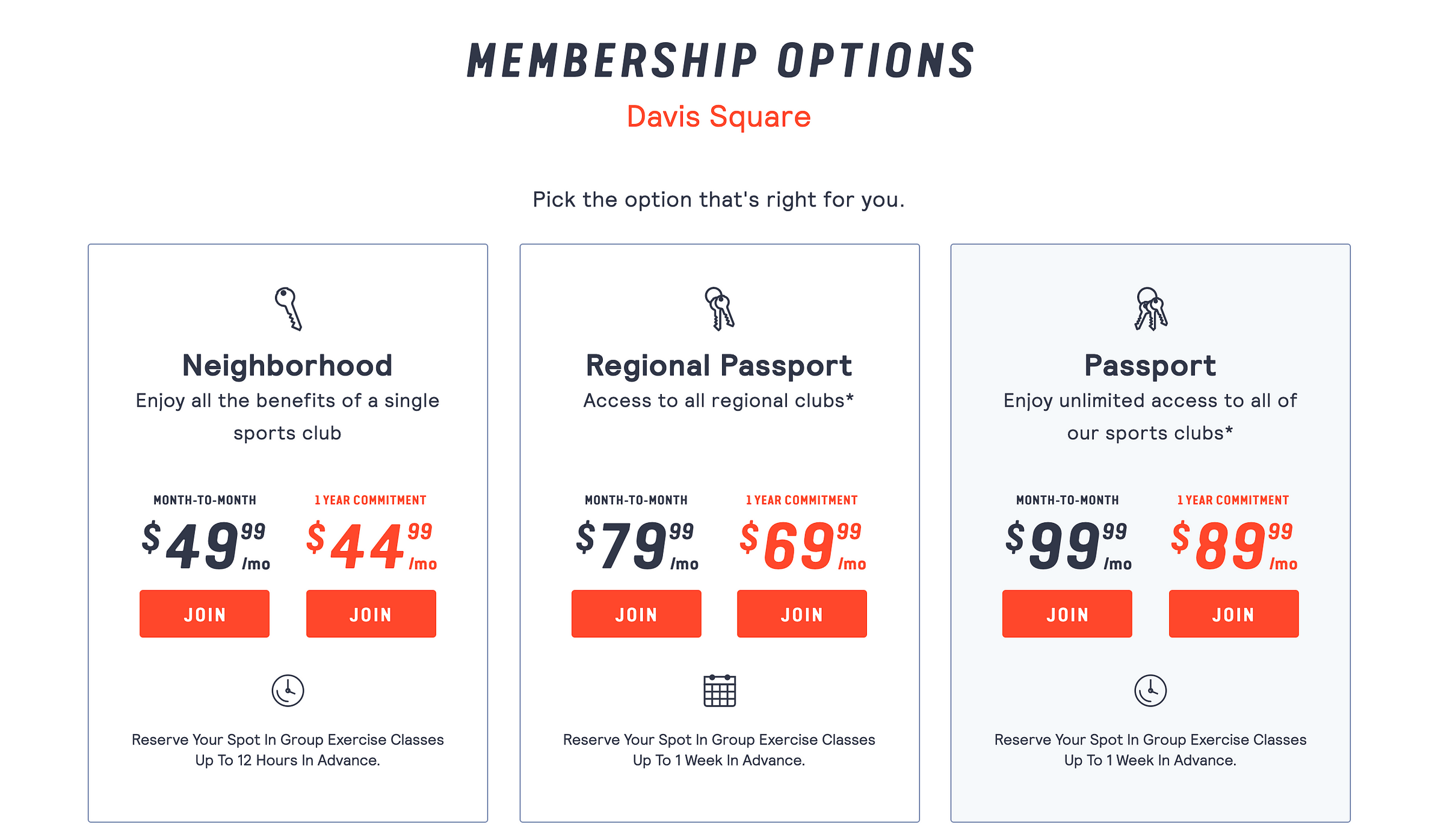I used to love Boston Sports club. I remember paying something like $95 a month for it and loving it despite the relatively high price point.
And then I heard, they dropped their prices. Slashed them to $19.95 a month in 2015. And on top of that members hated them.
And now, they seem to have made their way back to a higher price point of $49.99 a month+.
At the same time, Planet Fitness charges ten dollars a month. And OrangeTheory can run over $200 a month.
So why the pricing gap? How can companies have such different price points for what seems to me the exact same product.
At the same time, I happen to read “Understanding Michael Porter” on a recent Porter Airlines flight to Toronto.

In this post I summarize Michael Porter’s concepts, including competition, the five forces, value proposition and value chain, and fit. Concepts that most product managers say they understand, but few have a deep enough understanding to apply them in their job.
Which is why most products end up straddling, rather than having a clear strategy.
Strategy is like Golf. It has a huge learning curve, and it seems like a lot of work when you get started. So most people give up early before the point where they get any returns from it.
Which might explain why I suck at golf so much.
Competition
The first thing that Michael Porter stresses is that business is unlike sports. There is no winner. And no losers. If everyone tries to compete to be the best, everyone loses. Why? Because then you are competing on the same dimensions, start mirroring each other’s moves, and look exactly the same to customers. What’s the only thing that’s left to compete on? Price.
So prices keep going down.
And so do profits.

Strategy
Strategy helps you in this case. Porter defines strategy as follows:
Strategy explains how an organization, faced with competition, will achieve superior performance.
But when you compete to be different, you choose a path different from that of others. In which case you compete on factors other than price. Customers weigh in factors other than price in selecting you. And so you can increase profit.
From a customer’s perspective, this is defined by your value proposition. From your perspective, it is defined by the value chain. I’ll explain both of these in more detail.
Value proposition
Value proposition is a combination of three things
- Customers you want to serve
- Value you want to provide
- Relative price

Let’s compare Planet Fitness with OrangeTheory.
Planet Fitness provides customers who have solo, basic gym routines a convenient place to exercise at a relatively low fixed price per month.
OrangeTheory provides busy professionals who want to maximize the health benefits of the short workout time they have, a scientifically proven, coach supported workout in a pay as you go format. It also fills other needs, for example social connection, and satisfaction from the fact that people can measure how well they did in their workout.
See how the value provided, customer segment and price points are different?
A key aspect is the pricing model. Other than difference in the actual amount paid, the pricing model is different. Planet Fitness sets a low fixed monthly price with the expectation that a lot of customers will not come in too often. Their costs are also mostly fixed at the facility level, so it makes sense to spread this over a large number of customers. On the other hand, OrangeTheory charges per class except its highest tiers. Their costs are variable per class, costs for the trainer to teach the class, and the fact that they need to introduce new classes if too many people sign up.
This is incidentally Porter’s first test of strategy. If your value proposition is the same as your competitors, you do not have a strategy.
Value chain
While value proposition is the external facing aspect of strategy, value chain is the set of activities that businesses need to do to serve the value proposition for their customers.
Let’s compare the value chain for both customers

Let’s compare R&D for example. Orangetheory fitness is constantly trying to optimize their workout and prove out the benefits to it. That is core to their value proposition; if customers do not believe that this workout is unique and gives them an opportunity to get into the best shape of their lives, then the whole value proposition falls down.
On the other hand, Planet Fitness would not benefit from investing in any R&D. They instead would rather spend effort in making sure they can keep most of their equipment functioning at all times, and can quickly replace broken treadmills etc..
This is the second test for strategy. If the value chain for the two businesses is the same, then they don’t have distinct strategies.
Trade-offs
The third test for strategy is clarity on what you would do and you wouldn’t do so that you can deliver your value effectively.
For example, if OrangeTheory started offering monthly memberships for use of their equipment, it would just confuse their offering and hurt their business. Their equipment might be unavailable for their workouts, which further causes harm to their core value proposition.
Another example is that PlanetFitness does offer some classes. If it was up to me, I would look to eliminate those entirely. This makes it clear to the user that this is a no-frills, down to earth gym that gives you access to exercise equipment at almost all hours of the day, for a low monthly cost. Classes increases the variable cost, and seems to go against the other value propositions.
Fit
The fourth test for strategy is fit. Are the activities you are doing reinforcing each other i.e., is the value or cost of one activity affected by the way other activities are performed.
For example, OrangeTheory’s investment in R&D pays off in marketing. Both these activities reinforce each other.
Continuity
A last test of strategy is do you have enough continuity in strategy that your organization has time to get good at it.
This one is hard! We all tend to favor quick results. And we love to pivot. But very often it takes time to actually get results. And we have to — in the meantime — meet an acceptable level of income, pay our employees etc..
Making strategies successful with continuity is ultimately a matter of strong leadership. If you don’t have that, you can design all the most awesome strategies in the world, but you cannot achieve them.
For Product Managers
It is essential that you — as a product manager and a leader — get clear on what’s the strategy for your business, your organization, your product. You might find that there is a lack of coherence in strateg, which in itself is a great finding.
At this point it might be tempting to either give up or try to change everything at once.
But great strategies are not designed in a conference room. You think of them, your run experiments towards them, and iterate to something awesome.
But be patient. Make sure you don’t give up before you’ve had a chance to deliver results.




